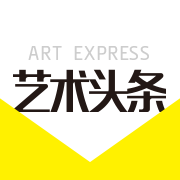
Exhibition of Korean artist Chung SangHwa on view at Dominique Lévy Gallery
2016-06-07 15:34:12 未知
Dominique Lévy Gallery is presenting an exhibition of Korean artist Chung SangHwa (b. 1932). Presented jointly with Greene Naftali Gallery, New York, this represents the first solo exhibition of Chung’s work in the United States. The exhibition will span the artist’s career, with a survey of Chung’s work on view at Dominique Lévy and recent paintings displayed at Greene Naftali.
Dominique Lévy’s portion of the presentation includes fifteen large-scale canvases spanning from 1969 to 2014. On view are two early paintings, Untitled 69-3 (1969) and Untitled 73-5 (1973), which exemplify the first stage of Chung’s development, in which the artist tore segments of paint from the canvas substructure in freeform patterns. Beginning in the early 1970s, Chung’s work increasingly addressed repetition, ritual, and process, typified in the 1973 masterpiece Untitled 73-1211, a canvas of over seven feet tall comprised of faint vertical lines of opalescent white and gray. Works from the following decade grow increasingly complex and incorporate systematic and rigorous grid patterns in darker and more vivid colors. Dominique Lévy will also present two paintings from 2013 and 2014, establishing a bridge with the recent work, from 2007 to 2015, on view at Greene Naftali. In conjunction with the exhibition, the galleries will publish a catalogue featuring a newly commissioned essay on Chung’s work by art historian Tim Griffin, an original poem by Yuko Otomo written in response to the temporal encounter with Chung’s painting, and a comprehensive chronology situating Chung’s life and work within the context of postwar art and culture.
The group of artists Chung is associated with, Tansaekhwa, meaning literally “monochrome painting,” emerged in Korea in the mid-1960s. Dating from Korea’s emergence as an autonomous global and cultural power in the wake of the nation’s emancipation from Japanese rule in 1945 and the devastation of the Korean War from 1950 to 1953, Tansaekhwa is indicative of the new position of historical and international primacy that the country assumed at this time. During this time of independence, Korean artists entered into cultural exchange with various prominent art movements, including Abstract Expressionism in the United States, art informel in France, and Gutai in Japan. Following an initial period of influence from these movements, characterized by Korean informel, Tansaekhwa developed as a distinctly modern phenomenon, a blending of tradition and innovation exemplary of Korea’s new presence on the world stage. Although it has ties to Minimalism, Tansaekhwa is distinct from the Western tradition of abstraction because of its engagement with such Eastern philosophies as Taoism, Neo-Confucianism, and Buddhism. Tansaekhwa was not a formally organized group, and did not have an artistic manifesto or clearly delineated objectives, instead functioning as a loose association of artists including Chung Sang-Hwa, Park Seo-Bo, Lee Ufan, Yun Hyong-Keun, Ha ChongHyun, Chung Chang-Sup, and Kim Tschang-Yeul, among others.
One of the most prominent Tansaekhwa painters, Chung is recognized for his innovative painting method, which the critic Kwang Suh Oh has described as “taking off/removing” and “re-painting.” In this highly meditative and meticulous process, the artist first coats the canvas with a mixture of glue, water, and kaolin clay, and then scores gridlines on its reverse. After the mixture has dried, he ritualistically and intuitively folds the canvas, and then strips the hardened material from the surface in narrow bands. Afterwards, he fills in the segments of bare canvas with acrylic paint. Chung repeats this process in succession to create multilayered, complex surfaces. In this way, the work embodies a temporal stratification, a multiplicity of processes that formally corporealize the experience of time and of an action in time that marks its passage. Art historian Lóránd Hegyi has theorized that Chung’s work initiates a “metaphorical archeology” within the viewer, entailing an internal excavation of the artist’s process that leads to self-realization. The monochrome surfaces that result from the continual application, removal, and reapplication of paint on the canvas can be read as multitextural and complex landscapes, their hues ranging from light tones—which evoke sand and stone—to deep, bright, and even electric shades of blue, calling to mind the reflection and refraction of light over water.
Chung developed his signature process while living in Kobe, Japan in the early 1970s, and simultaneously pursued a different style of painting, which is closely related to assemblage and features brightly colored geometric shapes over untouched canvas. The latter exemplifies his engagement with the Japanese Gutai movement, bolstered by a close friendship with Jirō Yoshihara, the group’s leader. In a representation of Chung’s early period, Dominique Lévy will present paintings from both bodies of work.
Living in Paris, Kobe, and Seoul for extended lengths of time throughout the last three decades of the twentieth century, Chung enacted a genuinely cosmopolitan practice. In a manner unparalleled in modern East Asian art, his work calls into question the idea of painting as pure surface and introduces an internal, phenomenological aspect at the center of the viewing experience.
The exhibitions at Dominique Lévy and Greene Naftali are presented in collaboration with the artist and with Hyundai Gallery, Seoul.
(责任编辑:张天宇)
注:本站上发表的所有内容,均为原作者的观点,不代表雅昌艺术网的立场,也不代表雅昌艺术网的价值判断。

 阿拉里奥画廊上海转型:为何要成为策展式艺术商业综合体?
阿拉里奥画廊上海转型:为何要成为策展式艺术商业综合体? 张瀚文:以物质媒介具象化精神世界
张瀚文:以物质媒介具象化精神世界 吕晓:北京画院两个中心十年 跨学科带来齐白石研究新突破
吕晓:北京画院两个中心十年 跨学科带来齐白石研究新突破 OCAT上海馆:参与构建上海艺术生态的十年
OCAT上海馆:参与构建上海艺术生态的十年
全部评论 (0)